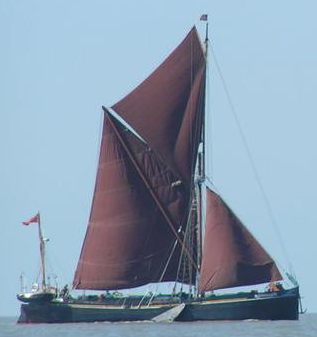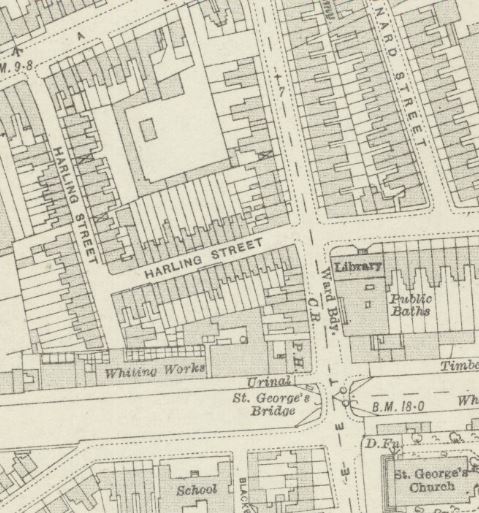The Grand Surrey Canal was begun in 1801, with great plans to link the fast-developing docks at Rotherhithe with Mitcham and Portsmouth. It opened as far as Camberwell Road in 1811, with two branches later reaching Croydon and Peckham. It formed a useful industrial artery for all kinds of goods and materials, finally closing in 1970.
Imagine going back 200 years in time… you’d now be floating in the Grand Surrey Canal, one of the boldest canal projects London has ever seen.
Engineer Ralph Dodd’s ambitious proposal of 1799 was for a new canal running from the Thames at Rotherhithe south to Deptford, turning west through the park to Kennington, then south to Mitcham in Surrey. Following an Act of Parliament, work began in 1801, and within 50 years the canal was thriving and had made a huge impact on this part of London.
The canal was planned to help the market gardeners and farmers of the area get their produce away for sale, but, after it opened through to Camberwell in 1811, it gradually became an extension of the Surrey Docks at the Thames in Rotherhithe. Wharves were built along almost the whole length of the canal banks. Where goods were not actually loaded or unloaded, they were being processed in dozens of different factories, stored in warehouses, or loaded onto road transport in yards and depots.
The 1801 Act of Parliament setting up the canal laid out the rates for goods transport, which now gives an interesting idea of the kind of things it carried:
For Free-stone, Lime-stone, Chalk, Bricks, Slates, Tiles, Corn in the Straw, Hay, Straw, Faggots, Dung, Manure, Stones and Clay – 2d per Ton, per Mile.
For all Cattle, Calves, Sheep, Swine, and other Beasts; Lime, Rough Timber, Hemp, Tin, Bark, Iron-stone, Pig-iron and Pig-lead – 3d per Ton, per Mile.
For all Coal, Charcoal, Coke, Culm, Flour, Wheat, Barley, Oats, Beans, Peas, Malt, and Potatoes – 4d per Ton, per Mile.
For all Hops, Fruit, Goods, Wares, Merchandize, and other Things whatsoever – 6d per Ton, per Mile.
And in Proportion for more or less than a Ton, and more or less than a Mile.1
Kids would ride the empty barges east along this stretch, or climb from barge to barge. Occasionally horse-drawn barges offered the chance of a quick horse ride. Or, if the Bank Ranger wasn’t on his rounds, there was always swimming.
By the 1930s motor traffic had overtaken the canals, and by the 1960s, as the Surrey Docks declined, the canal lapsed into polluted neglect, resulting in several child-drowning accidents. In 1960, this ‘killer canal’ was drained and filled to the west of Wells Way, and there were few objections when the eastern section and the Peckham branch followed suit in the early 1970s.
You can read an excellent, much fuller history of the canal on Wikipedia.
Listen to people’s memories of the final days of the canal here.
Today the line where the canal used to run is the central walkway through Burgess Park. Follow this line from Camberwell, through the underpass, beneath the ‘Bridge to Nowhere’, to Glengall Gardens, once a canal basin allowing barges to turn to and from Peckham.
The Barges
Somewhat surprisingly, that main traffic on the canal was made up of large sailing barges, rather than the usual canal ‘Narrowboat’. The Thames sailing barge was a type of commercial sailing boat common on the River Thames and the Thames Estuary in the 19th and early 20th century.
 The barge’s hull was originally made of wood, later steel, and was around 90 feet (30m) long and 20 feet (6m) wide. Most of the hull was a hold for cargo, with two small living areas in the bow and stern (front and back). As the hull was flat-bottomed, the barges could float in as little as 3 feet (1m) of water, making them ideal for work in canals. In fact, they could navigate small rivers and creeks around the coast of Britain, the open sea, the river Thames and then the Surrey Canal, allowing goods to make the complete journey without being trans-shipped.
The barge’s hull was originally made of wood, later steel, and was around 90 feet (30m) long and 20 feet (6m) wide. Most of the hull was a hold for cargo, with two small living areas in the bow and stern (front and back). As the hull was flat-bottomed, the barges could float in as little as 3 feet (1m) of water, making them ideal for work in canals. In fact, they could navigate small rivers and creeks around the coast of Britain, the open sea, the river Thames and then the Surrey Canal, allowing goods to make the complete journey without being trans-shipped.
The barges had two masts with four sails, which were often rusty red in colour because of the red ochre and cod oil which was used to keep them waterproof. The masts (18m high for the main mast) were taken down when inland, so that the barges could be towed by horse, and sometimes local boys, under the low bridges on the way to Camberwell and Peckham. In later years some barges were also fitted with engines. In good conditions, sailing barges could reach speeds over 12 knots (13 miles an hour).
Cargoes varied enormously: bricks, mud, hay, bibles, lemonade, ice, sand, coal and refuse, for example. A two-person crew was enough for most voyages, though they would have to work very hard.
The barges’ heyday came around 1900 when over 2000 were registered, but by 1970 they had all but disappeared from the river and canal.
The Bridge to Nowhere Art Project
Why is there a bridge to nowhere?
The Friends of Burgess Park invited resident Art in the Park artists to work with local young people aged between 7-14 years old to find the answer. Exploring the park with a historical map, the children were able to discover the lost Grand Surrey Canal. They stretched arms across the bridge and concluded that it took 30 children to equal the width of the canal.

Using imagination and role-play they became a working barge (or was it a pirate ship?) with others pulling cargo down the canal. They realized that, while being a child back then was hard work fraught with danger, it also seemed very exciting!
They imagined where local industries would have been and discovered that one was a lemonade factory – which brought Charlie and the Chocolate factory to mind. A tasting session was required to see if R. Whites is the fizziest lemonade!
Walking to the Lime Kiln some thought they saw a castle, but with research they learned how the kiln made lime to help build houses. Though hot and difficult, some thought it would have been a great job for keeping warm in winter.
Children looked at the vivid blues of the Camberwell Beauty butterfly, and imagined how they could incorporate these colours into their own work.
The children then worked in drawing, painting, wood carving, plaster casting and brick making, recreating the factories’ smoky chimneys, barges and the flowing water of the canal itself.

This art process can now be seen at the underpass in Burgess Park. It is the children’s reinterpretation of the barges and the materials they once transported back and forth along the canal such as bricks, lemonade bottles, shells, timber and printed books. Read about the opening of the artwork in our blogpost.
Credits:
Thank you to the young artists that took part in The Bridge to Nowhere Underpass project
Shakira Waite-Gordon
Kai Campbell
Finn Wharton
Amon Alem
David Daramola
Jacqueline Achiburi
Amy Daley
Siggy Mignott
Rianna Virgo
Siqourney Mignott
Shamiah Waite – Gordon
Eniloa Ayomide
Phebe Davies-Bates
Lucy Webb
George Webb
Davina Daramola
Maya Howard
Sidje Nichoh
Bo Jenkins
Tiana Page
Additional thanks to the following people who helped with this project: Pauline Smith, Carol Dalton, Michael Faraday School, Southwark Play Service.
It’s great to see an article on the Surrey Canal and that the remains are being put to good use. Also I was glad that the local children could be made aware of what used to pass near to where they lived. I loved the list of their names, they were so unusual and I couldn’t have even dreamt them up, they showed that every one was a different individual and should be looked upon so.
I used to live in North London and sometimes ventured to South London and saw the demise of the Grand Surrey Canal and often wondered what use it had been put to. I’m glad that it is being put to educating children and get them use their imaginations.
I was born and brought up in Harling Street and just round the corner from Wells Way Bridge and lived through the Blitz. We used to fish in Surrey Canal for redthroats and stickleback fish. They were small fish. The canal never saw much trade during the war although there was the odd barge full with timber. On the canal bank there were cottages and chalk pits owned by Jennings. Harling Street was L-shaped but with a short extension on the elbow which backed onto these chalk pits.
Here’s how it looked in 1913 (now the area of the BMX track)

I was born in the area, l went to Walworth School and often walked over Burgess canal footbridge to get to a good chip shop the other side of thee canal. As much as l understand the dangers of the canal, it probably was not any different from the new lake created. I think it was short sighted to abandon the canal, it could have linked the lake to the Thames for pleasure uses, but timber and refuse could have continued to have been transported if the desire was there and to reduced road transport.
Well said Lewis! I agree completely. Interestingly, Jessie Burgess herself argued in favour of keeping the canal too!